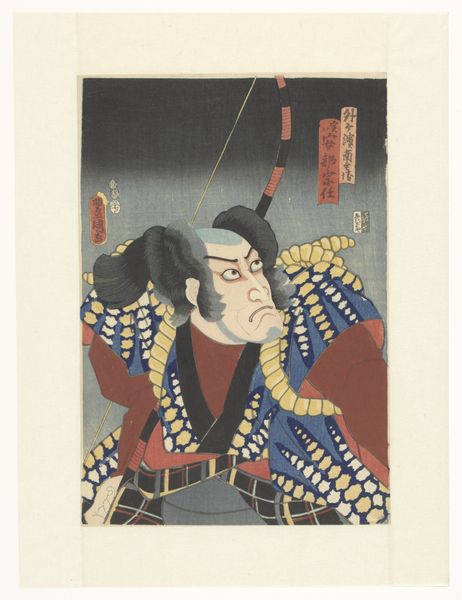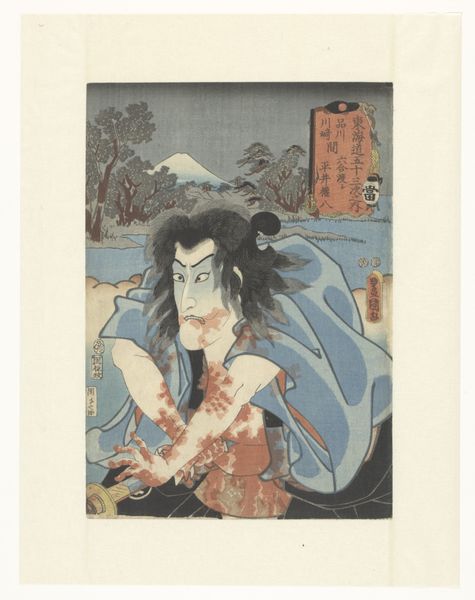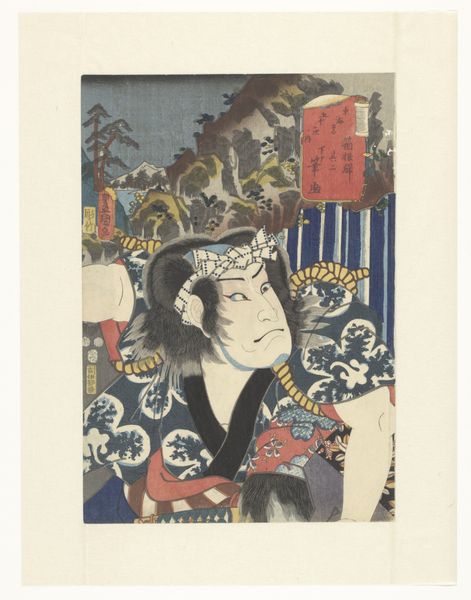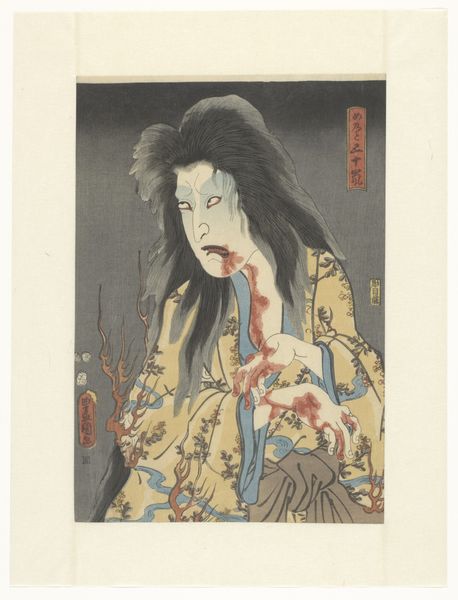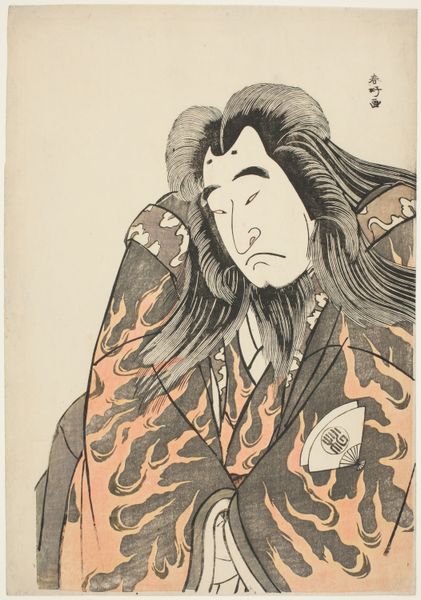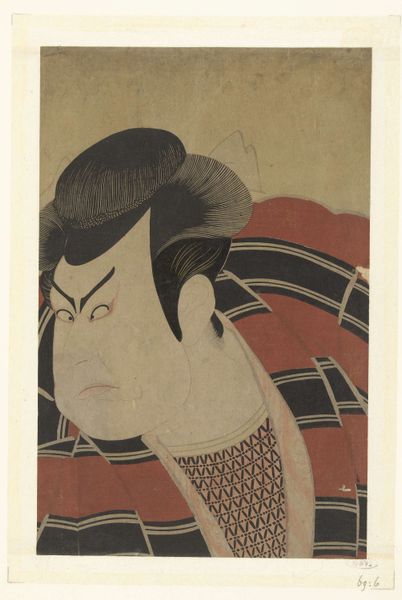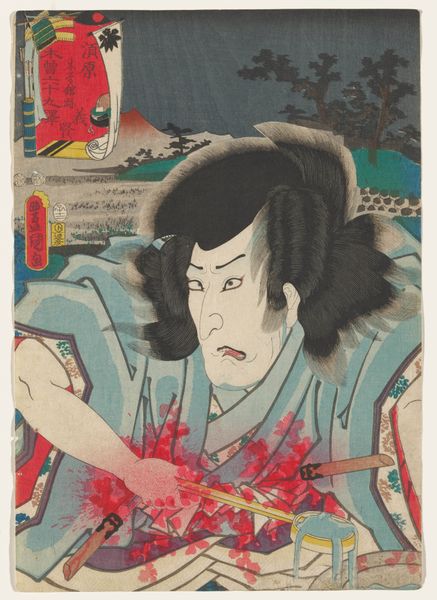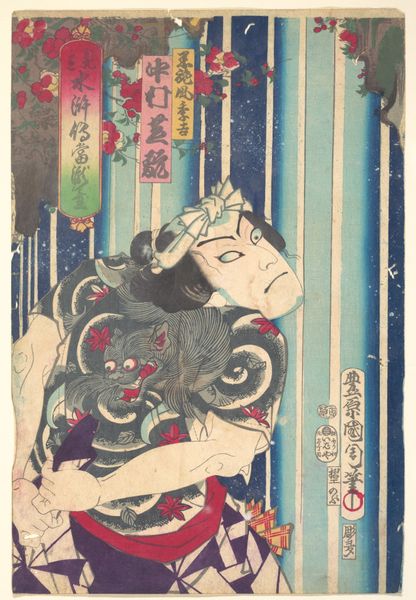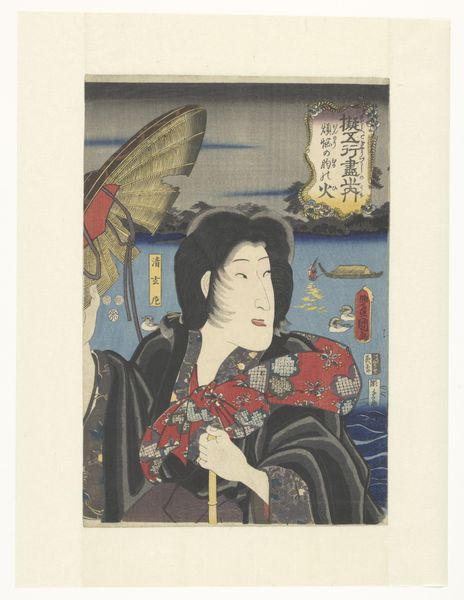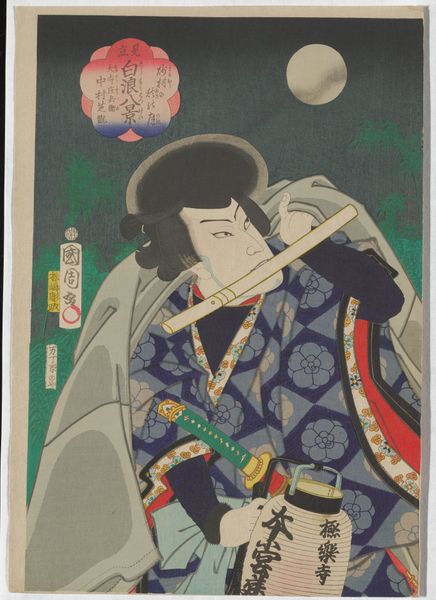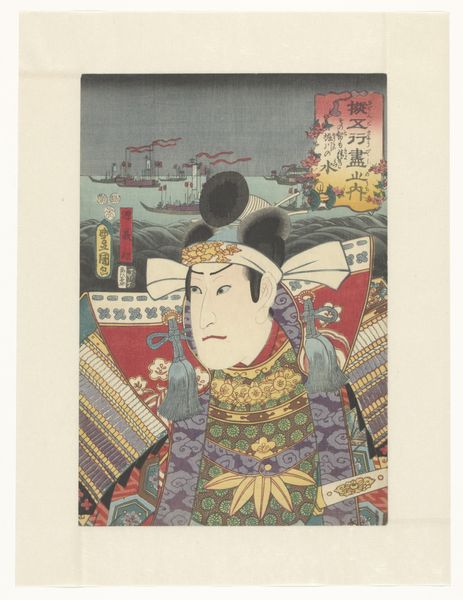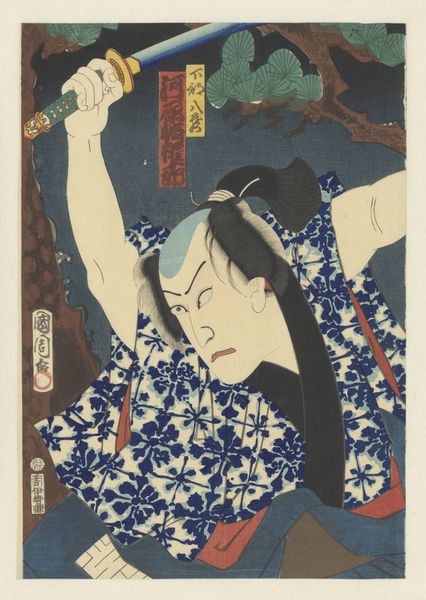
print, woodblock-print
#
portrait
# print
#
asian-art
#
ukiyo-e
#
figuration
#
woodblock-print
#
history-painting
Dimensions: height 358 mm, width 256 mm
Copyright: Rijks Museum: Open Domain
Curator: This dramatic woodblock print is “The new Taira emperor Masakado,” crafted between 1849 and 1852 by Utagawa Kunisada. It’s part of the Rijksmuseum’s collection. Editor: Whoa, it’s intensely theatrical, isn't it? That frozen expression, like he's caught between fury and fear… Curator: Precisely. Kunisada was a master of Ukiyo-e, or "pictures of the floating world," a style that frequently portrayed Kabuki actors in dramatic roles. Editor: The figure feels monumental, despite presumably being relatively small, like it captures more than the paper allows... Is he really staring at two headless figures there or am I just seeing that? Curator: That's right, yes. Those disembodied heads hovering beneath the moon play upon a legendary account wherein Masakado was decapitated, but his head flew around for some time. The figure is powerfully rendered in dynamic composition. Editor: So the dramatic colors in the kimono - I read phoenixes and elaborate foliage? It amplifies that raw emotion – maybe even overblown with so much ornamentation! The whole scene becomes incredibly evocative given those spectral forms hovering nearby... Curator: It’s a clash of opulence and horror, typical of Kunisada. His use of strong outlines, vivid hues and decorative patterns create depth, even within the flat perspective of the print. The rich color and fine detail of the phoenix are particularly compelling. Editor: Seeing it like that gives me new eyes—it's less a document, and more like tapping into a specific feeling from a past now lost to time. This makes me want to explore other works from that moment even though this wasn’t the piece that I had wanted to see on display. Curator: Utagawa Kunisada presents us with so much more than merely history; we have received an embodiment of both myth and visceral experience. It is certainly why the woodblock work retains its profound presence even now.
Comments
No comments
Be the first to comment and join the conversation on the ultimate creative platform.
